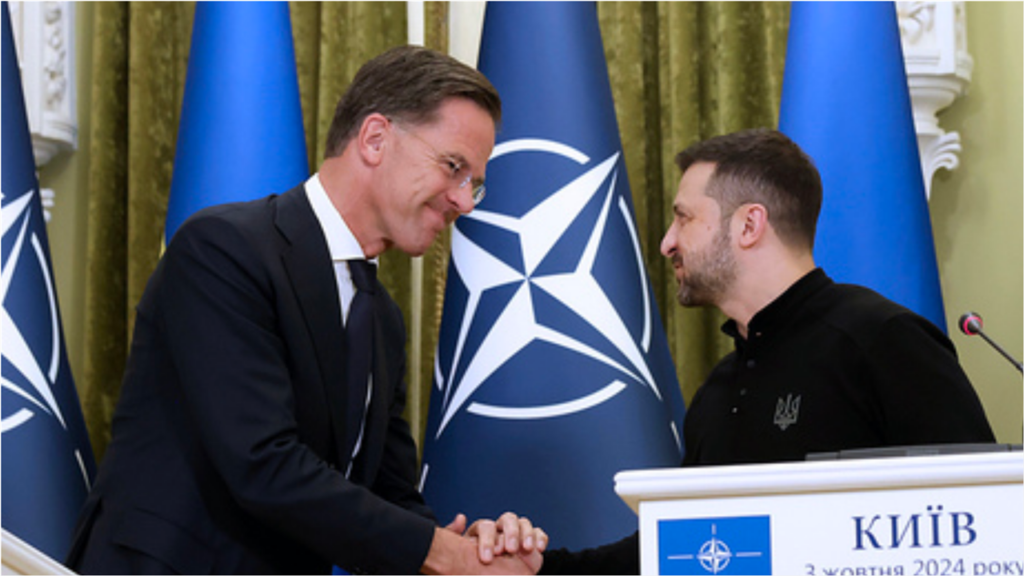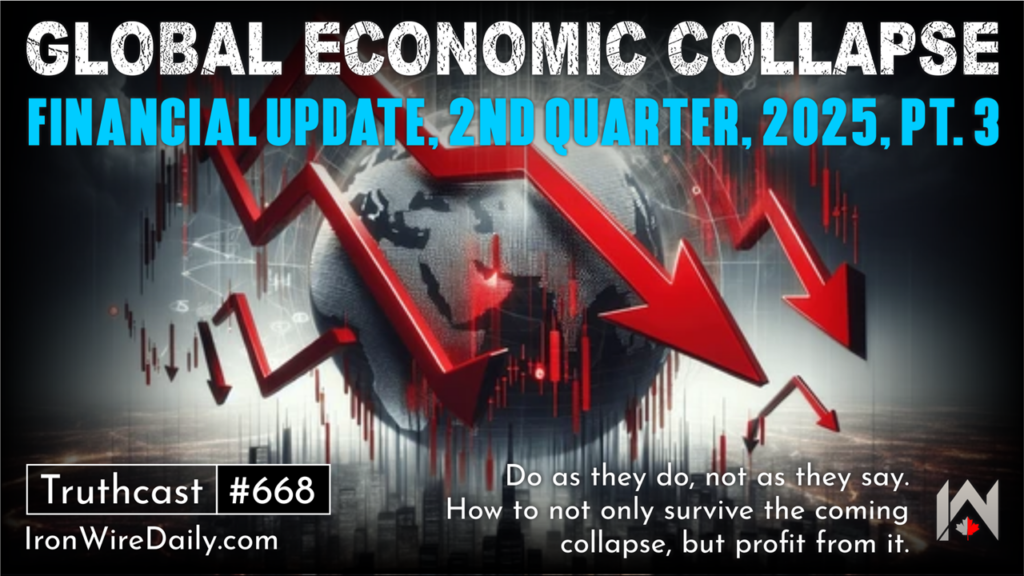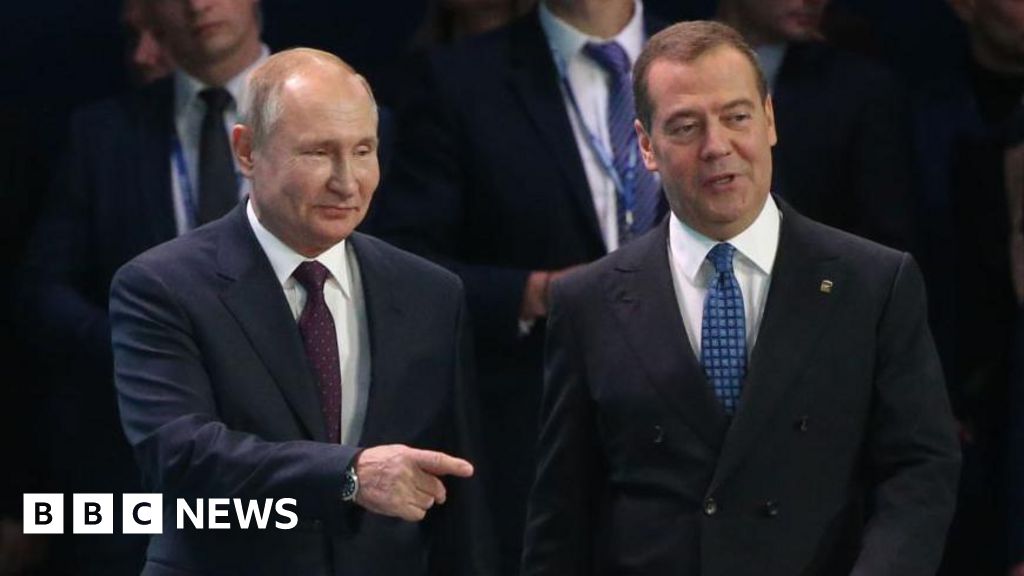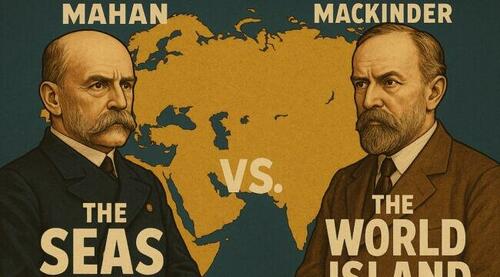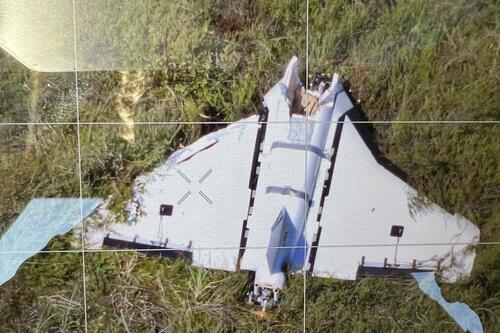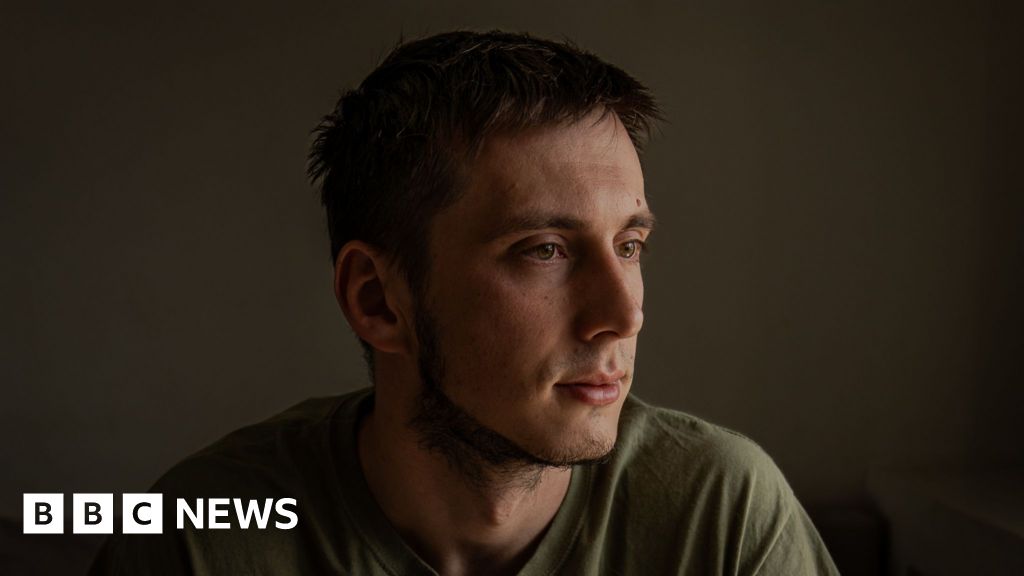Le Cercle: If something is going on internationally, they probably have someone on the inside – The Expose

Le Cercle: If something is going on internationally, they probably have someone on the inside
As part of a documentary series, a team investigated the activities of Le Cercle, a secret society that began as a group to counter communism. Initially, the group’s activities were limited to Europe, and then it expanded to the UK, USA and beyond.
Since the fall of communism and the end of the Cold War, Le Cercle has refocused its attention on anti-terrorism.
It is believed that Le Cercle is still a major player on the world stage, dictating and shaping foreign policy and national security policy, and they will likely continue to do so for many years to come. If there is something going on internationally, Le Cercle probably has someone on the inside.
Let’s not lose touch…Your Government and Big Tech are actively trying to censor the information reported by The Exposé to serve their own needs. Subscribe now to make sure you receive the latest uncensored news in your inbox…
‘Secret Societies: In the Shadows’ is a six-part documentary series released in 2022 that explores the history and mysteries of various secret societies throughout the world. It delves into the origins, missions and influence of these organisations, which have operated in secrecy and often been the subject of speculation and conspiracy theories.
The series is presented by Andrew Gough and Andrew McPherson, with additional contributions from Seika Groves and Seika, and covers the Knights Templar, the Illuminati, the Freemasons, the Skull and Bones, Le Cercle and the Hermetic Order of the Golden Dawn.
The description for Series 1, Episode 4, about Le Cercle reads:
Perhaps the hardest society to crack, Le Cercle goes all the way to the top. Heads of state. Intelligence operatives. Chiefs of industry. Vatican envoys. All have a seat at the table for meetings of the ultra-secret Le Cercle.
What started in the post-war years as a Catholic conservative group built to broker European rapprochement now operates as a shadow intelligence agency that is rumoured to control world politics.
Thought to be rooted in secret religious sects like the Opus Dei and Knights of Malta, its aims are now mostly political. Its members have funded coups and installed world leaders, all while they sit elbow-to-elbow with names like Rockefeller, Kissinger and Rumsfeld. Le Cercle operations circumvent traditional governments and all accountability.
Secret Societies: In the Shadows | Le Cercle, IMDb, TV Series 2022-2023
The following are the highlights from the video above, to which we have added some hyperlinks for context.
Table of Contents
Introduction to Le Cercle
In 1982, the head of Bavarian security, Hans Langemann, delivered a report to his superiors, revealing the inner workings of a secret society called Le Cercle, which included an agenda from a leaked Le Cercle meeting. Item 1 on the agenda read: “To effect a change of government in the United Kingdom, accomplished.”
The Langemann Papers were the first documentary evidence of the existence of Le Cercle, a clandestine group involved in subverting democratic processes in Western Europe.
Related:
- Meet Le Cercle – Making Bilderberg Look Like Amateurs, True Publica, 4 November 2017
- Le Circle – Secret Elite Ruler Conspiracy Meetings, U2R2H Documents, 16 March 2007
Le Cercle is a worldwide network of intelligence agents, politicians and power brokers with the goal of winning the Cold War, and has been involved in smear campaigns, arms deals, propaganda and plots involving sinister characters since the early 1950s.
Secret societies like Le Cercle are essentially conspiracies where people work together to achieve something that the rest of the world does not want them to do or prefer not to hear about. They can be imagined as a “deep state” independent of government, led by people without a moral or ethical compass.
Le Cercle is a neo-conservative think tank of political power brokers, including former heads of state, policy wonks, diplomats, ministers of parliament and intelligence agents from around the world, such as MI5, MI6, the CIA, the French Service de documentation extérieure et de contre-espionnage (“SDECE”) and the German Bundesnachrichtendienst (“BND”). And their decisions influence millions of people across Western Europe and, in fact, throughout the world.
Post-WWII Europe and the Formation of Le Cercle
The group was founded in 1953 as a secret diplomatic channel between two nations looking to collaborate in the face of new and intimidating world powers, but has since become a deep state actor.
World War II began in September 1939 when Britain and France declared war on Germany in response to Hitler’s invasion of Poland. By 1940, France was divided into Vichy France, a “hand maiden to Nazi Germany,” and the occupied part of France. Charles de Gaulle was the exception who was appalled at the French capitulation to Germany and so led the “free France” forces from London.
After almost six years of death and destruction, Germany was finally defeated in 1945, leaving a bombed-out Europe, with one quarter of German houses destroyed in cities and the country had to contend with the legacy of the Nazi regime and plan for its future.
The post-war fate of Germany was decided by Allied leaders, including Soviet Premier Joseph Stalin, British Prime Minister Winston Churchill and US President Franklin D. Roosevelt, who met three months before Germany’s surrender on 8 May 1945 to discuss the country’s future.
The Yalta conference led to Germany being split into four zones, occupied by the British, Americans, French and Russians, with each having different visions for the country’s future. It also divided Berlin into two, which became a model of the Cold War.
France faced significant economic problems after the war, with industries undermined by the Second World War and extensive Allied bombing, leading to a difficult post-war reality and a national identity crisis.
Not only was France facing an identity crisis but the French people were embarrassed by the German takeover and the Vichy government, which divided the country and its families, leaving a lasting legacy that still haunts France today.
While Germany and France struggled with the after effects of war, the United States and United Kingdom formed a powerful new alliance, formalised by the Atlantic Charter in 1941, which would later become the foundation for the United Nations Charter in 1945.
While many Europeans welcomed the Anglo-American alliance, others were wary of the potential loss of economic and political sovereignty that came with accepting American economic support.
In post-war France, the Communist Party was the biggest political party, and the rise of communism was a significant concern, particularly with the presence of a major communist superpower in Eastern Europe.
Antoine Pinay, a French politician who had “played all sides” during the war, including briefly being part of the Vichy regime and helping save Jews, convened a secret meeting in the early 1950s to address the concerns over communism.
Pinay was defined by his Catholicism, conservatism and passionate stance against communism. He was also keen for a rapprochement with Germany.
He was joined by Conrad Adenauer, the founder of the Christian Democratic Union and Chancellor of Germany, who shared similar conservative and Catholic values with Pinay, and had a clean slate after being imprisoned during the war.
Adenauer believed that the only way forward for Germany was to create alliances with Western Europe and allow East Germany and the Soviet Union to crumble on their own. It is in this spirit of collaboration that Adenauer meets Pinay, where they discussed shared concerns about the English-American alliance and the communist threat, marking the beginning of Le Cercle.
The first meeting of Le Cercle was a political and diplomatic backchannel, where Pinay and Adenauer were joined by two other men, Joseph Strauss, a well-known politician in German circles, and Jean Violet, a lawyer and French intelligence agent with a questionable past having belonged to a violent right-wing group called La Cagoule in the 1930s. La Cagoule was formerly known as the Secret Committee of Revolutionary Action (“SCRA”).
In 1953, the four men met secretly three times a year in tucked-away hotels across Europe, discussing their agenda. Their meetings were more like business discussions, rather than typical secret society gatherings involving rituals, but with a conspiratorial tone due to their desire to keep their discussions private from their respective governments.
Le Cercle’s Expansion and Influence
Minutes of the Le Cercle meetings have never seen the light of day, but they led to a significant policy win when France and Germany signed the Treaty of Rome in 1957. This established what was to become the European Economic Community (“EEC”), a precursor to the European Union.
With its new economic allies, Le Cercle expanded. In the years that followed, the group invited influential conservatives from across Western Europe, including some shadowy characters who would later be accused of participating in conspiracies financing terrorist organisations and other crimes.
For example, Alfredo Sanchez Bella, the minister for information in fascist Spain who joined Le Cercle in the 1960s, was accused of trying to bribe an official to change the sentences in the murder trial of six members of a Basque separatist group.
Italian politician Giulio Andreotti, who later became the Italian prime minister, was invited to join Le Cercle and had notorious connections to the mafia, as well as being accused of gathering intelligence on public figures and involvement in an attempted coup along with along with the commander of Italian police, the CIA’s station chief in Rome and Italy’s Gladio network.
The CIA, MI6, and Western German BND invested heavily in secret armies, known as Gladio, which were established to wage anti-communist partisan wars in Europe, with billions of dollars “off the record” being spent on ammunition and other resources.
Le Cercle’s meetings now occurred twice a year with a maximum of 20-30 attendees. They brought together senior politicians, aristocrats, intelligence experts and people from the darker corners of the world to discuss global issues and their own interests.
The group’s influence was significant, as evidenced by their role in preventing the United Kingdom from joining the European Economic Community in 1963. Pinay and Adenauer were opposed to the American-British alliance’s influence in Europe, so Adenauer secretly supported a veto from French President Charles de Gaulle, whom he had helped to gain office. The UK’s membership in the EEC would be denied until 1973.
Le Cercle’s power began to wane in the late 1960s, as the political landscape in Europe shifted. The Christian Democrats were losing their ascendancy in Germany and being replaced by the socialist Social Democrats, who had a more conciliatory approach towards East Germany. Likewise, in France, this is when the de Gaulle era ended, and France also moved to the left.
The death of Adenauer in 1967 and the ageing of other key members, such as Pinay, marked the end of an era for Le Cercle, as the group struggled to maintain its influence in a changing European political environment. However, Le Cercle would bounce back.
Le Cercle’s Anti-Communist Efforts
Starting in the late 1960s, Le Cercle, under the leadership of Violet, adapted to the changing political environment in Europe by opening its membership to conservative leaders from its former economic and diplomatic rivals: the United States and Great Britain. This helped them to reach new levels of power and influence. Notable figures such as David Rockefeller and Henry Kissinger began attending meetings. Eventually, even Richard Nixon attended a Le Cercle meeting.
The addition of American members, including CIA and former CIA agents, marked a significant shift in the circle’s meetings.
Members of the Monday Club in the United Kingdom were invited to meetings, which further expanded Le Cercle’s reach. The Monday Club was a political pressure group aligned with the Conservative Party. The Monday Club was anti-immigration, opposed to the decolonisation of Rhodesia and supported the South African apartheid government.
Apartheid in South Africa was widely condemned, with the United Nations determining it to be a crime against humanity in 1972, but Le Cercle continued to support the regime, sharing concerns about the spread of communist ideologies in Africa as a new front in the Cold War. An invitation was extended to the South African government to join Le Cercle, allowing them to choose their own delegates, which included Foreign Minister Pik Botha and senior officials from South Africa’s foreign affairs.
The Soviets were trying to gain influence in Africa through both financial aid as well as through military support. Le Cercle feared that groups like the African National Congress, within which Nelson Mandela was a pivotal figure, were influenced by, if not controlled by, communist ideas.
And so, Le Cercle’s members, including those from the American and British governments, were involved in efforts to maintain the South African government, with Le Cercle creating and disseminating pro-apartheid propaganda in the early 1970s using funds from the South African intelligence agency, the Bureau of State Security (“BOSS”).
To bolster the campaign in South Africa, Le Cercle enlisted the services of Brian Crozier, an Australian political writer and historian who worked with the British. Crozier played a key role in promoting Le Cercle’s interests, using his extensive access to heads of state and his experience as a journalist to push Le Cercle’s agenda, particularly in the area of anti-communism.
Crozier got his start working for the Information Research Department, a propaganda outlet closely linked to MI6, which was part of the British Foreign Office. The aim of the propaganda was to provide a message to the largest group of people possible by making it resonate with their lived experience.
The propaganda efforts around communism focused on different aspects, such as the loss of personal freedoms and the potential for hardship, while communist propaganda emphasised the benefits of working together to alleviate hardship, with each side targeting people from different positions.
Crozier later became the director of a CIA-backed propaganda outlet called Forum World Features and started his own information service, the Institute for Conflict Studies, which produced policy papers with an anti-communist viewpoint, using his connections in the CIA, MI6 and other intelligence agencies to distribute his work worldwide.
Crozier’s talents were useful to Le Cercle, not only in South Africa but in Britain as well. Some say that Crozier held far-right views, having publicly declared that the British military would be right to take over the government if it drifted too far left.
By the 1970s and 1980s, Le Cercle’s numbers had grown to over 80 members as they prepared to face the growing communist threat that had been growing steadily since the end of World War II.
The Cold War began with the division of Europe after World War II, with the Soviets carving out their own empire through tactics such as the “salami tactics,” a divide and conquer process of threats and alliances to overcome opposition, but in a lot of places it was brutal and overt occupation, as seen in Hungary in 1956 and the Prague Spring in Czechoslovakia in 1968.
The Cold War was not only being waged in Europe, with the People’s Republic of China being established in 1949, the Korean War taking place from 1950 to 1953, and communist insurgencies emerging in countries like Laos, Cambodia and Vietnam, before shifting focus to Latin America in the 1970s.
As the Soviets expanded, American President Dwight D. Eisenhower and the CIA led the anti-communist response to prevent vulnerable countries from falling to communism, a goal shared by the members of Le Cercle.
By this time, Le Cercle was no longer focused on regenerating Catholic conservative Western Europe as it was initially set up to do. It was now focused on introducing people to each other as a pan-national response to a global problem, in this case, communism.
Le Cercle’s Activities in the UK, USA and the Middle East
Crozier and Violet collaborated on a series of reports via the Institute for the Study of Conflict, which were personally delivered by Pinay to US President Nixon, National Security Adviser Henry Kissinger and French President Georges Pompidou. The reports were also distributed by Le Cercle channels to other Western world leaders and the Pope.
The reports were always about the spread and threat of communism. With Crozier’s anti-communist work now in wide circulation, Le Cercle set out to get sympathising politicians elected worldwide. In the 1970s, they began to counter the rise of socialist parties, including Jimmy Carter’s Democratic Party in the US, Helmut Schmidt’s Social Democrats in Germany and Harold Wilson’s Labour Party in the UK.
Le Cercle attempted but failed to get France Joseph Strauss elected German chancellor in 1976, threw their weight behind an already popular Ronald Reagan and supported the election of Conservative MP Margaret Thatcher.
In 1974, Crozier published a report accusing unions aligned with Harold Wilson’s Labour government of being full of “red wreckers” plotting against British industry at the behest of the Soviets, which was widely publicised and contributed to Wilson’s eventual resignation.
Harold Wilson was paranoid about political and security plots against him. There were two stories in The London Evening News about 40 or 50 MPs with communist connections. Later that year, it was alleged that Labour Minister John Stonehouse was a Czech agent. These ultimately contributed to Wilson’s downfall and Thatcher’s election in 1979.
The week after Margaret Thatcher is elected, Crozier is invited to meet with her. Le Cercle documents leaked in 1982, the Langemann Papers, read: “To effect a change of government in the United Kingdom, accomplished.” Although it is suggested that Le Cercle may have exaggerated its role in this matter.
Harold Wilson’s resignation as Prime Minister may have been due to his concerns about potentially having dementia, as well as the state of the pound and rampant inflation, rather than any smear campaign by Le Cercle.
Le Cercle discussed measures to promote Ronald Reagan’s presidential campaign at their meeting on 22 June 1980. Reagan was already poised to become the President of the United States.
Crozier flew to Washington to offer his services to Reagan. When Reagan became president in 1981, he provided Le Cercle with a direct pipeline to powerful people in the Western world.
The election of Ronald Reagan in the United States, Margaret Thatcher in Britain and Helmut Kohl in Germany marked a shift to the right and the rise of strongly anti-communist regimes. Fingers were pointed at the influence of Le Cercle, but it’s only part of a much bigger picture.
The rise of the Thatcher-Reagan relationship was partially informed by events in Russia, the Iranian revolution and the Soviet invasion of Afghanistan, which had a significant effect on US and global relations.
The Iranian revolution brought a fundamentalist Islamic regime into power, and the Soviet invasion of Afghanistan led to CIA involvement and the provision of weapons to the Mujahideen fighting against Soviet occupation. These events led a lot of thinkers in the United States to imagine that they were losing their grip on the Middle East and that the Cold War was pivoting now in favour of the Soviet Union.
The situations in Iran and Afghanistan were also worrying to other Middle Eastern leaders, including Saudi Prince Turki bin Faisal, who was the head of the Saudi intelligence services and attended a Le Cercle meeting in 1979. At the time, Saudi Arabia was economically unstable and susceptible to communist ideology, which, if it took hold, would have meant the fall of the House of Saud. Iran had started talking to the Soviets, which perhaps really scared the Saudis. So, by attending the meeting, Prince Turki was perhaps attempting to gather as much information as he could about Saudi Arabia’s neighbour, Iran.
Le Cercle set up broadcasting towers in Saudi Arabia to promote democratic ideology through the Voice of America, but it is also suggested that these towers may have been used for eavesdropping on neighbouring countries like Iran.
Related:
- Before the Iranian Revolution, the Shah was in bed with oligarchs and the CIA
- Islamo-communism is used by Islamists to gain power – and then they turn on the communists
Le Cercle’s Activities in Africa and Beyond
In the 1980s, Africa became the target for Soviet expansion. In response, Portugal, France and Britain attempted to prop up their colonies. But the Africans resisted and the civil wars that unfolded in Angola and Mozambique, the leftovers of the Portuguese Empire, were really important in the global context of the Cold War.
The collapse of the Portuguese Empire led to chaos in Africa. It became a battleground between communist forces backed by the Soviet Union and anti-communist rebel forces supported by the United States and countries like South Africa.
Le Cercle, a secret society, allegedly funnelled money, logistics and intelligence reports to rebel groups in Angola and Mozambique to dislodge the communist-backed regimes, making contacts with dodgy leaders like Jeremias Chitunda (?) of Angola and Evo Fernandez of Mozambique.
The conflicts in Angola and Mozambique resulted in millions of deaths and displacements, with war crimes committed by all sides, including the use of thousands of child soldiers. “But if the alternative is allowing the Soviets to move into Africa, to take over impoverished countries, Le Cercle will do what is necessary,” the narrator said without mentioning that the Soviet Union is also to blame or questioning if African populations wanted to be ruled by communists.
Along with bolstering anti-communist forces across the world, Le Cercle also spread anti-communist propaganda in the communist Eastern Bloc. Its network included politicos, intelligence operatives and figures like Otto von Habsburg, the last Crown Prince of the Austro-Hungarian Empire, who was a key figure in the Pan-European Union.
Von Habsburg played a significant role in European unification, particularly in planning the Pan-European Picnic in August 1989, which was co-organised by his daughter, Walburga, and marked the temporary removal of a 1-kilometre border fence between Austria and communist Hungary, allowing over 600 East Germans to flee to the West. It was the largest East German exodus since the Berlin Wall was erected.
The Pan-European Picnic was a pivotal event that contributed to the fall of the Berlin Wall two and a half months later, on 9 November 1989, and the subsequent collapse of communism in Eastern Europe.
Note from The Exposé: Klaus Schwab invited Otto von Habsburg to the inaugural meeting of the European Management Forum, the precursor to the World Economic Forum. An Anglicised spelling of “Habsburg” is “Hapsburg.” John Coleman names Otto von Hapsburg as a past/present member of the Committee of 300 in his 1991 book ‘Conspirators’ Hierarchy: The Story Of The Committee of 300’.
After the fall of communism, Le Cercle member Crozier wrote to former President Reagan, thanking him for his support and access, and Reagan responded by acknowledging their alliance in fighting communism.
Some feel that to attribute the collapse of the Berlin Wall to one person or a handful of people is “ridiculous” and “totally disowns decades of European history and millions of Europeans, not to mention [Mikhail] Gorbachev and the changes in the Russian state.”
Le Cercle’s Post-Cold War Activities
The fall of communism marked a new era for Germany, leading to a resurgence in strength as a nation, and it is now one of the economic powerhouses of Europe today.
After the fall of the Soviet Union, Le Cercle shifted its focus from anti-communism rhetoric to warning the world about the potential impact of international terrorism. They started meeting with people like General Norman Schwarzkoff, who was involved in the first Gulf War.
Le Cercle members have had connections to an arms dealer involved in the Iran-Contra affair, and Le Cercle chairman, Jonathan Aitken, was outed in a controversial arms deal with Saudi Arabia.
Related: Aitken dropped by the Right’s secret club, Independent, 28 June 1997
The group has also liaised with Afghani envoys to the Taliban and welcomed in prominent figures such as Israeli Prime Minister Benjamin Netanyahu, as well as Donald Rumsfeld, Richard Perle and Paul Wolfowitz, who attended a Le Cercle meeting together in the early 2000s.
Le Cercle is part of a secret world of foundations, think tanks and discussion groups that play a significant role in making critical decisions as much as governments themselves. They have connections to European aristocracy and the Vatican, but have also branched out to become more diverse.
It is believed that Le Cercle is still a major player on the world stage, dictating and shaping foreign policy and national security policy, and they will likely continue to do so for many years to come. “If there is something going on internationally, Le Cercle probably has someone on the inside,” the narrator said.
#image_title
” data-image-caption=”
#image_title
” data-medium-file=”https://i0.wp.com/expose-news.com/wp-content/uploads/2025/08/AugFeat1a.png?fit=300%2C169&ssl=1″ data-large-file=”https://i0.wp.com/expose-news.com/wp-content/uploads/2025/08/AugFeat1a.png?fit=639%2C359&ssl=1″>
The Expose Urgently Needs Your Help…
Can you please help to keep the lights on with The Expose’s honest, reliable, powerful and truthful journalism?
Your Government & Big Tech organisations
try to silence & shut down The Expose.
So we need your help to ensure
we can continue to bring you the
facts the mainstream refuses to.
The government does not fund us
to publish lies and propaganda on their
behalf like the Mainstream Media.
Instead, we rely solely on your support. So
please support us in our efforts to bring
you honest, reliable, investigative journalism
today. It’s secure, quick and easy.
Please choose your preferred method below to show your support.
While previously it was a hobby culminating in writing articles for Wikipedia (until things made a drastic and undeniable turn in 2020) and a few books for private consumption, since March 2020 I have become a full-time researcher and writer in reaction to the global takeover that came into full view with the introduction of covid-19. For most of my life, I have tried to raise awareness that a small group of people planned to take over the world for their own benefit. There was no way I was going to sit back quietly and simply let them do it once they made their final move.



